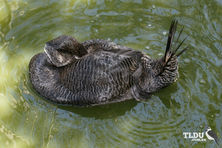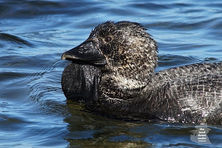
Shoppers Feedback:
Jan 17, 2017
Hello Ros,
I have now paid the invoice, but I would like to write to you just to say a big THANK YOU for getting me the Penguin!
The ChatterMate Penguin became a nice memory for me when I was in New Zealand, and I am so greatful to you for arranging so that I could have it! :-)
Thank you so much!!!!!!!!!!!
Regards,
Malin
Hi Ros,
Many thanks for your very kind email. I really appreciate your prompt reply!
I appreciate your advice regarding the decorations and customs. These are a gift for my daughter’s exchange student family so when she returns home on the weekend I will show her and see if she loves them as much as I do!
Thanks so very much again - I am truly grateful for your kind assistance.
Kind Regards
Bernadette
Ros,
Thanks again for the great customer service. It's a refreshing change!
Best regards,
Trevor
Hey Roz,
Thank you for your emails. Just loved my first order. The cute little Aussie bush critters are going to be used for an office Christmas decoration. My colleagues also liked them and talked about making an order to your site. I'll send you a photo when completed.
I'll be ordering more to send to my daughter's host family in America.
Fabulous service from you.
Kind regards,
Michelle
Thankyou. Order arrived today. One very happy grandson with his new beastly binoculars.
Regards,
Irene
- Home
- Wild Wonders
- Shop
- Aromas of Australia
- Australian Made
- Books
- Book Marks
- Christmas Decoration Sale
- Christmas Decorations
- Clocks
- Drink Holders
- Garden & Outdoor
- Gift Wrapping & Cards
- Home & Giftware
- Jewellery
- Keyrings
- New Products
- Pencils & Pen Holders
- Photo Frames
- Plush Toys
- Plush with Sound
- Sheepskin Rugs
- Stationery
- Stone Carvings
- Toys & Games
- Travel Goods
- Wedding
- Wild Figurines
- Wildlife Safety Products
- Wind Chimes
- Wine Charms
- View All Products
- Wildlife
- Australiana
- Explore
- Contact Us

Quick Facts
| Length: | 60 cm |
| Height: | - |
| Weight: | - |
| Colour: | - |
| Habitat: | Deep freshwater lagoons with dense reed beds |
| Food: | Aquatic insects, crustaceans, snails, shellfish, fish, frogs, ducklings. Seeds from aquatic plants a |
| Predators: | - |
| Status: | Rare in SA. Vulnerable in VIC. Secure in NSW,QLD, TAS and WA. Not present in NT |
The male Musk Duck is the largest of Australia's ducks and has a powerful build. Musk Ducks get their name from the strong musk odour produced from a gland on the rump. The female is smaller than the male. Both male and female Musk Ducks are sooty-brown in plumage, with paler brown barring on the body and fine spots of the head. They are paler below, becoming whiter towards the abdomen. The male is decorated with a large bulbous lobe of skin hanging under his bill. This sac increases in size at the start of the breeding season. The female also has a much-reduced lobe on the underside of its bill, only visible at a short distance. The bill is dark grey in both sexes and the eye dark brown. The tail is a collection of long, stiff feathers, which can be held in a fan-shape. Young Musk Ducks are similar to the adult female, but are paler, with a dull yellow tip on bill, and no lobe.
Musk Ducks are found only in Australia. They range from north-west Western Australia, through the south and east to southern Queensland, and can be found several hundred kilometres inland in some areas.
Musk Ducks tend to be found in deep freshwater lagoons, with dense reed beds. They are normally seen singly or in pairs, but may form medium to large groups in the winter. Flight usually takes place at night. The birds' bulky size means a large distance is required for take off, and the landing is often quite clumsy.
Despite their bulky appearance, Musk Ducks are excellent divers, and search underwater for the majority of their food. They mainly feed on animals, including aquatic insects, crustaceans, snails, shellfish, fish, frogs and ducklings, but some seeds of aquatic plants are also eaten on occasion.
Musk Ducks have legs that are placed far back on the body to help them swim and dive, making them clumsy walkers. So, unlike many other duck species, they are very rarely seen on land, preferring to stay in the water.
The male Musk Duck has an energetic courtship display. He raises and fans the tail over the back, inflates the lobe on the throat, splashes water with vigorous kicks of his feet and throws his head back while uttering a loud whistle. This display is performed for long periods at a time, both night and day. The nest is a large cup of trampled vegetation, loosely lined with fine grasses and feathers, and is hidden in dense reeds. One clutch of eggs is laid each year.
Last Updated: Thursday 18th July, 2013
BirdLife Australia - www.birdlife.org.au
BUSH e-TELEGRAPH
Signup for our monthly newsletter the "e-Telegraph"
Quick Links
Home | The Beginning | About The Land Down Under | Wild Wonders | Advertise on Wild Wonders | Christmas Decoration Sale | Christmas Tree Decorations | Drink Holders | Plush with Sound | Stone Carvings | Wildlife Wine Charms | Freebies | Australian Wildlife | Help Our Wildlife | Australiana | Photo of the Month | Explore The Land Down Under | Contact Us | Legal Notices


